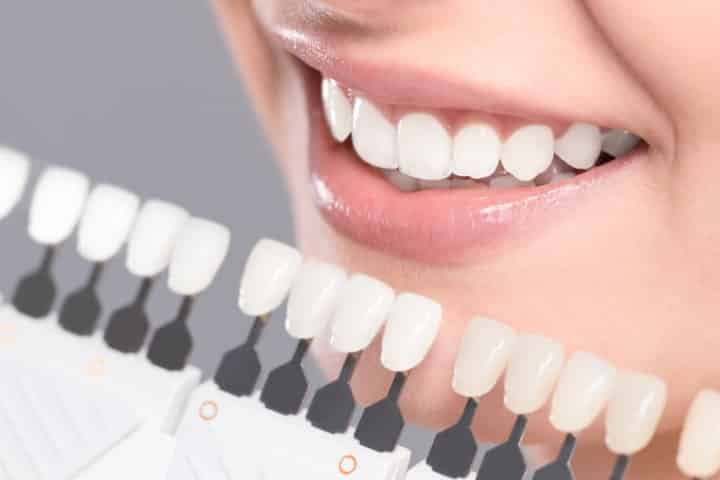Whitening

There are number of reasons why teeth can change color. Some common reasons are listed below:
- Tobacco Use - Tobacco contains tar and nicotine which together with oxygen can give your teeth a yellowish tint.
- Age - Over time, the outer layer of your tooth, commonly known as enamel gets worn away by brushing. This exposes the inner, yellowish layer of your tooth called dentin.
- Food or Drink - Chromogens (intense color pigments) found in common foods and drinks like coffee, tea, and red wine can easily stain your enamel.
- Trauma - Dentin (darker, yellowish layer under your enamel) production is increased in response to injury. So injuries like falls or hits to the mouth may cause a yellowish appearance.
- Medications - Certain medications like antihistamines, blood pressure medications, and antipsychotics can cause tooth darkening. If you were exposed to antibiotics like tetracycline or doxycycline as a baby you may have discolored teeth later in life. Chemotherapy and radiation in the head and neck region may also cause darkening of teeth.
Most whitening products contain either hydrogen peroxide or carbamide peroxide as their main ingredient. These break stains down into small pieces reducing their concentration and allowing your teeth to shine brighter.
It is important to discuss with your Dentist which option is best for you before moving forward. Here are the most common methods for bleaching:
- In-Office Bleaching - this is the most popular form of whitening. Your dentist will apply a shield to your gums to protect them. This is followed by layers of bleach depending on the brand your dentists chooses to use.
- Over-the-Counter - this can range from mouthwash to at-home whitening strips. The difference here is most over-the-counter whitening agents are a much lower concentration than what your dentist would use in their office. Before using an over-the-counter bleaching kit, it’s best to discuss with your dentist to make sure it is safe and effective. You also want to make sure it has the American Dental Association Seal of Acceptance.
- At-Home Bleaching Trays made by your Dentist - in this case your dentist will make you a custom-made bleach tray, provide you with a bleaching solution and how to use it. This is typically less expensive than In-Office Bleaching but does take a few weeks to see results. If In-Office Bleaching makes you nervous, this is a great alternative.
- Stain Removal Toothpastes - most toothpastes help remove some surface stain if used regularly. Again, it is important to make sure whichever toothpaste you select has an ADA Seal of Acceptance to make sure it is safe and effective.
It is important to note that whitening should only be done after discussing with your dentist, to avoid long-term damage to your teeth. Some people report temporary tooth sensitivity after whitening sessions. This happens when the whitening agents make their way to the internal layer of the tooth and cause irritation to the nerves.





